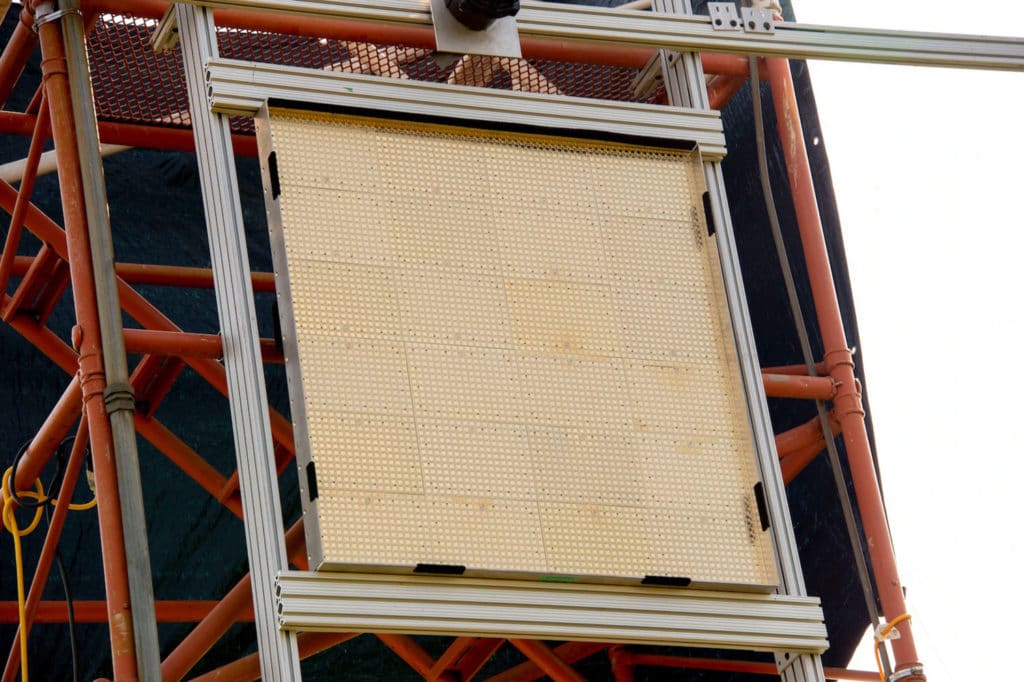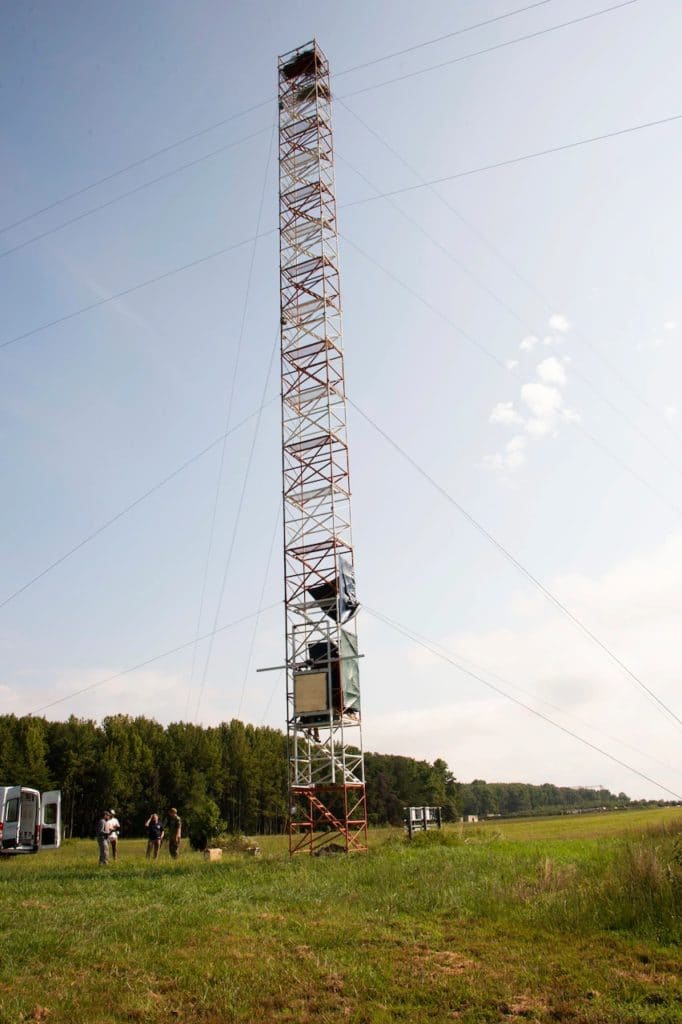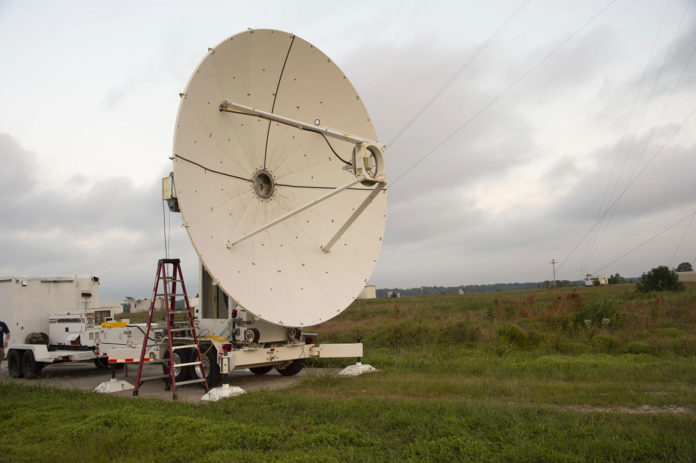In the most significant power beaming demonstration in nearly 50 years, a team of researchers at the U.S. Naval Research Laboratory (NRL) recently demonstrated the feasibility of terrestrial microwave power beaming by transmitting 1.6 kilowatts (kW) of power over 1 kilometer at the U.S. Army Research Field in Blossom Point, Maryland.
Called Safe and COntinuous Power bEaming – Microwave (SCOPE-M), the project was funded by the Office of the Undersecretary of Defense for Research and Engineering’s Operational Energy Capability Improvement Fund. SCOPE-M is built of tens of thousands of x-band antennas. Each of these antennas is connected to a small rectifier diode that converts the incident microwave power into DC electrical power.

NRL team led by Christopher Rodenbeck, Head of the Advanced Concepts Group, established the practicality of terrestrial microwave power beaming and beamed 1 kW of electrical power over a distance of 1 km using a 10 gigahertz (GHz) microwave beam. SCOPE-M demonstrated power beaming at two locations. The first was at the U.S. Army Research Field at Blossom Point in Maryland, and the second was at the Haystack Ultrawideband Satellite Imaging Radar (HUSIR) transmitter at the Massachusetts Institute of Technology (MIT) in Massachusetts.

The 10 GHz frequency was chosen because it was able to beam even in heavy rain with a loss of power of less than five percent, and also, it’s safe for birds, animals, and people. In Maryland tests, the team exceeded their target by 60 percent by beaming 1.6 kW just over 1 km. The team did not have the same peak power at the Massachusetts site, but the average power was much higher, thereby delivering more energy.
The SCOPE-M technology demonstrations pave the way “for power beaming on Earth, in space, and from space to Earth using power densities within safety limits set by international standards bodies.” Rodenbeck stated power beaming is the ultimate green technology. Unlike other sources of clean energy, power beamed from space to Earth can provide power continuously, 24 hours a day, seven days a week, 365 days a year.
“Although SCOPE-M was a terrestrial power beaming link, it was a good proof of concept for a space power beaming link,” said Brian Tierney, Ph.D., SCOPE-M electronics engineer. “The main benefit of space to Earth power beaming for the DOD is to mitigate the reliance on the fuel supply for troops, which can be vulnerable to attack.”
